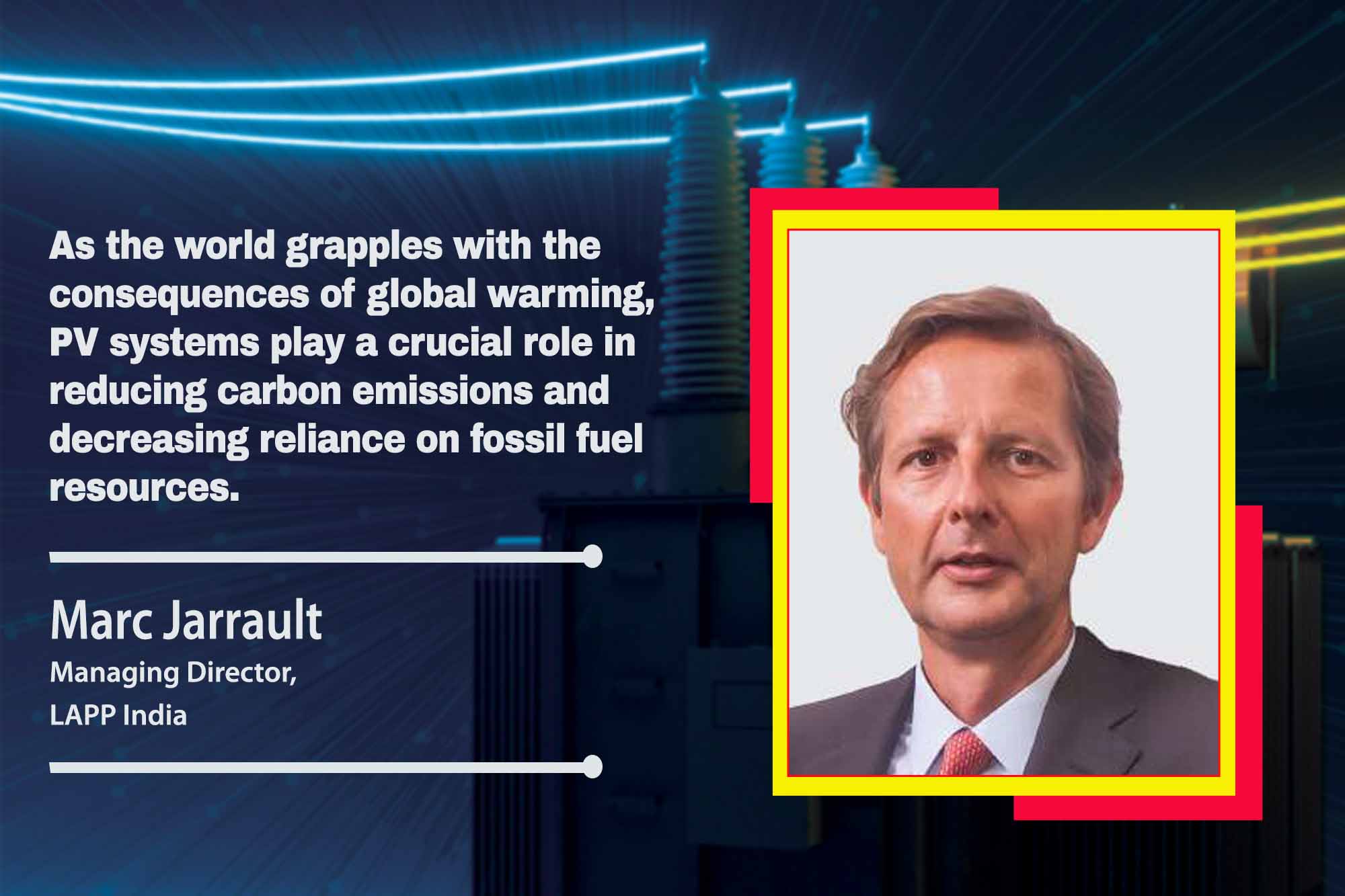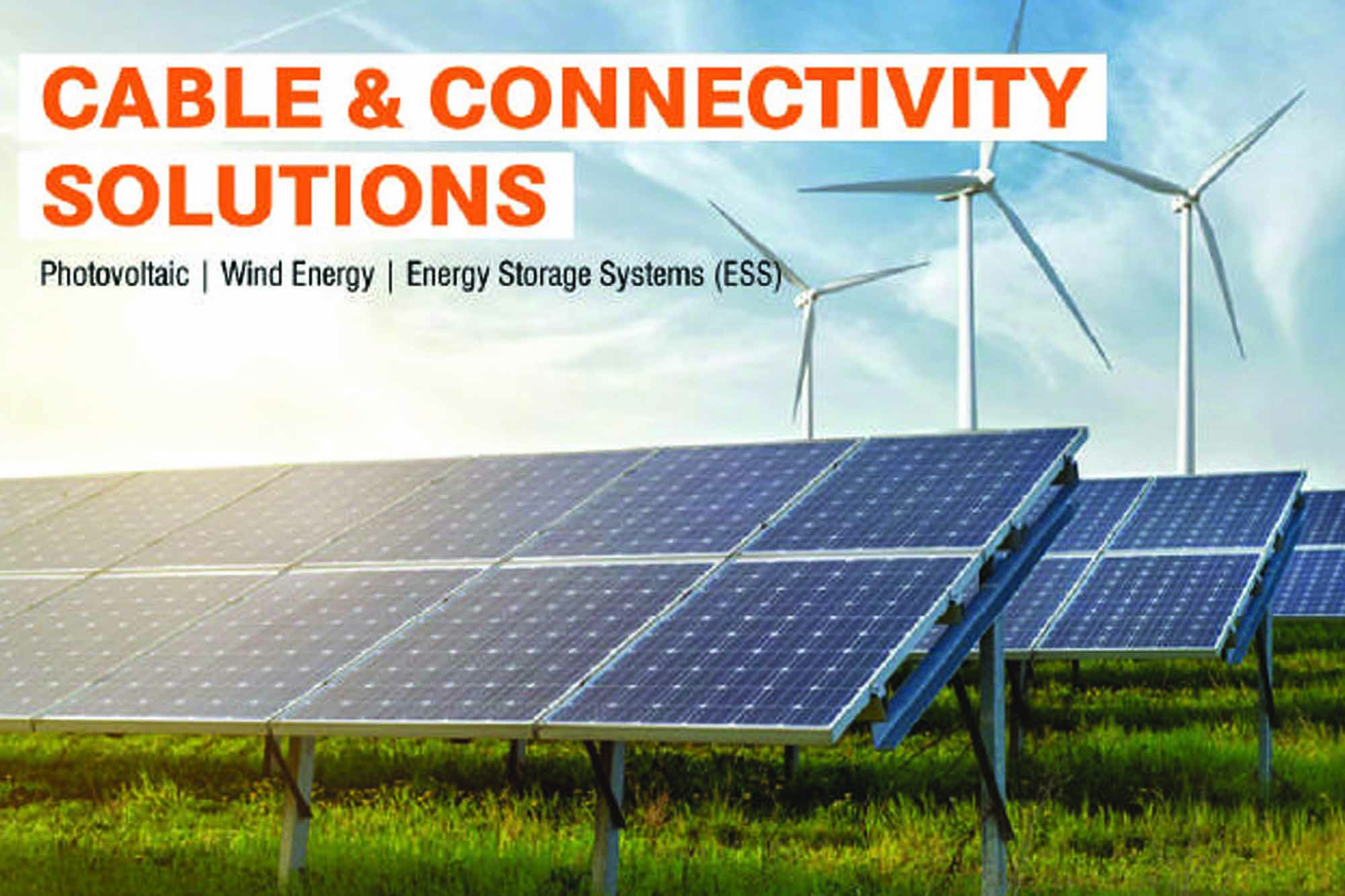Innovative photovoltaic systems are leading the sustainable energy transition
By EPR Magazine Editorial May 6, 2024 3:20 pm IST
By EPR Magazine Editorial May 6, 2024 3:20 pm IST

As the world grapples with the consequences of global warming, PV systems play a crucial role in reducing carbon emissions and decreasing reliance on fossil fuel resources.
In the changing landscape of energy production, photovoltaic (PV) systems have emerged as a crucial pillar of renewable energy. These systems that harness the sun’s power to generate electricity have revolutionised how we develop and use energy, providing an eco-friendly and sustainable alternative to traditional fossil fuels. As renewable energy sources such as photovoltaic systems, solar energy, and wind energy become vital weapons in the fight against climate change, LAPP has taken the lead by consistently coming up with innovative solutions to tackle the evolving challenges of these sustainable technologies.
As Photovoltaic systems have advanced into more powerful forms, the requirements for cables and components have increased significantly. LAPP has stepped up to this challenge by offering products designed to handle reliability and efficiency as top priorities. Besides excelling in photovoltaic technology, LAPP has diversified its portfolio to include cutting-edge connection solutions for wind energy generation. Wind power is the fastest-growing sector within renewable energy, with a significant positive impact on the environment. Nevertheless, the varying climatic conditions at global wind power sites and unique technical specifications present complex challenges. With over half a century of experience, LAPP has the expertise to tackle these complexities with its top-notch cables, cable glands, connectors and accessories.
One of the most compelling aspects of photovoltaic systems is their inherent sustainability, as PV panels convert sunlight into electricity without releasing greenhouse gases or pollutants. This characteristic has contributed substantially to the fight against climate change, reducing air pollution and alleviating the environmental impacts associated with the combustion of fossil fuels. As the world grapples with the consequences of global warming, PV systems play a crucial role in reducing carbon emissions and decreasing reliance on fossil fuel resources.

The reliability and durability of photovoltaic systems are remarkable. PV guarantee an extensive lifespan, often surpassing 25 years, with minimal maintenance. This durability guarantees a stable and consistent electricity source, reducing the energy supply’s vulnerability to disruptions triggered by natural disasters or unforeseen emergencies. Additionally, energy storage solutions, such as batteries, have been seamlessly integrated with PV systems to provide dependable power even with minimum to zero sunlight.
Innovations in solar cell materials, manufacturing processes, and system design have continuously driven down the cost of PV systems, making them competitive with conventional sources and more accessible to a broader range of consumers. As a result, solar power has become one of the most cost-effective sources of electricity in many regions, making renewable energy adoption more attainable. Their sustainability, scalability, cost-effectiveness, and reliability have pushed them to the forefront of the global effort to transition to cleaner and more sustainable energy sources. As we continue to grapple with the challenges of climate change and energy security, PV technology will play a pivotal role in reshaping the energy landscape, offering a brighter and more sustainable future for future generations.
Authored by: Marc Jarrault, Managing Director, LAPP India
We use cookies to personalize your experience. By continuing to visit this website you agree to our Terms & Conditions, Privacy Policy and Cookie Policy.